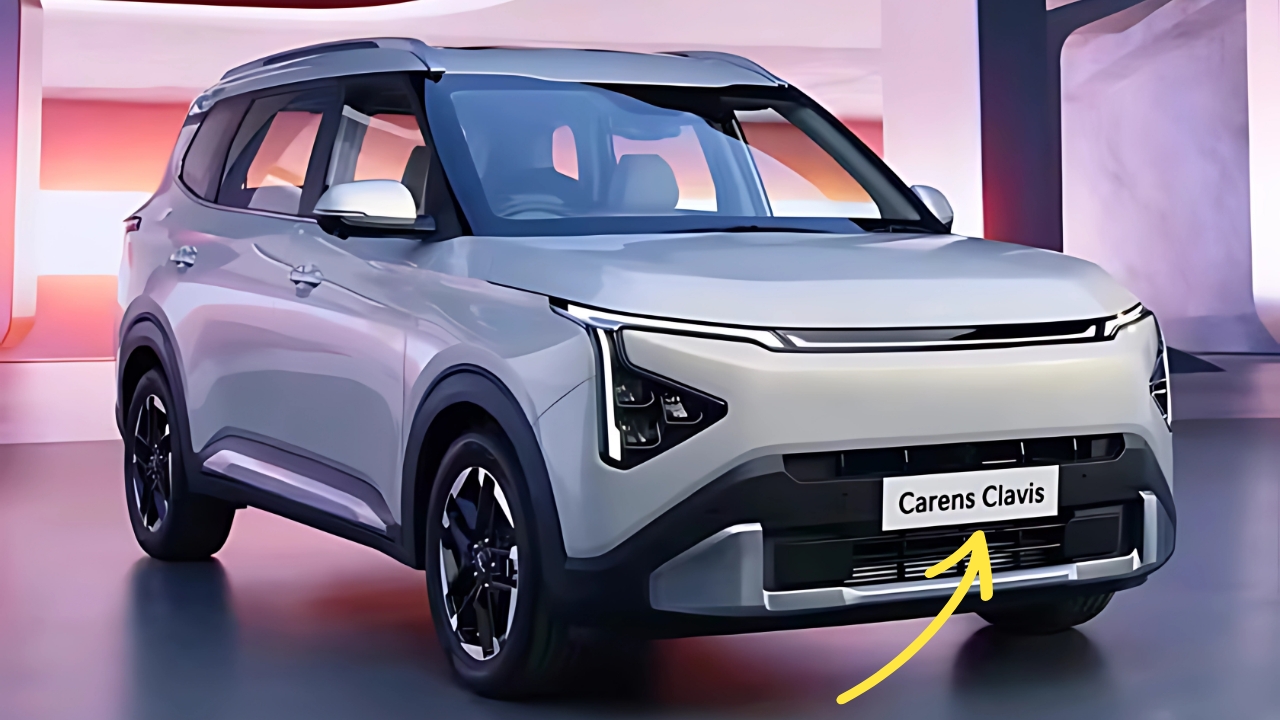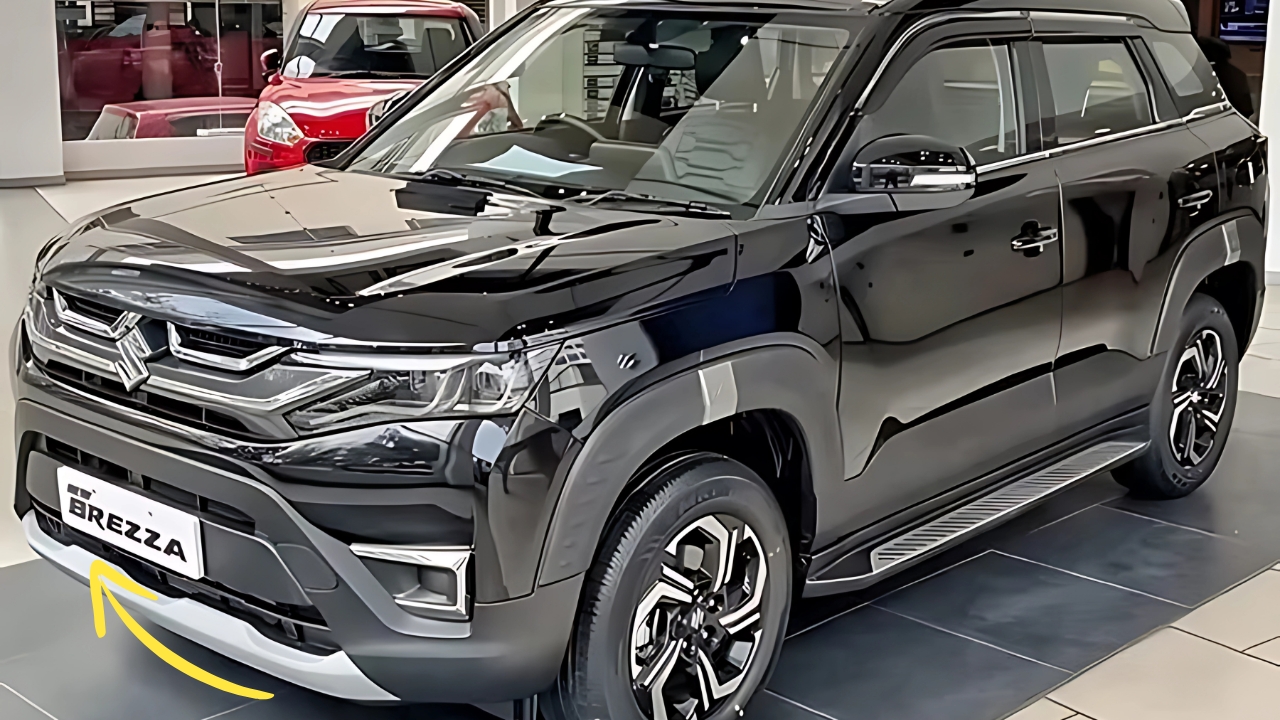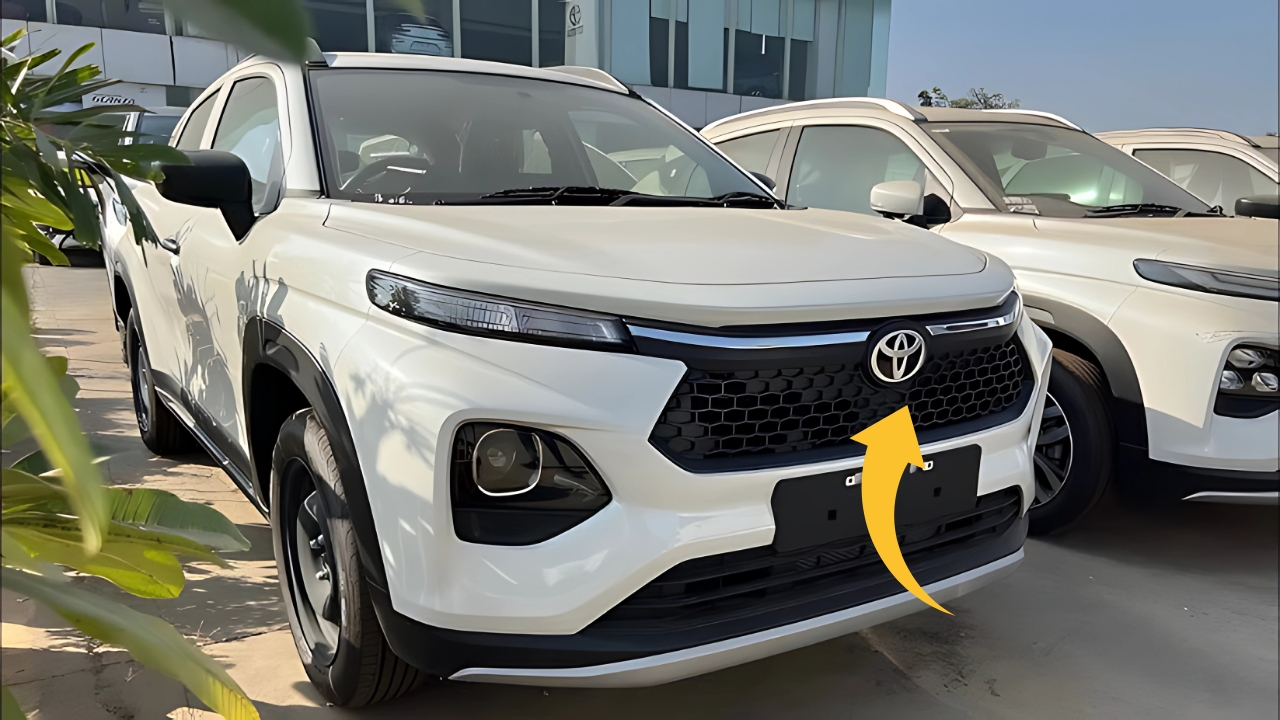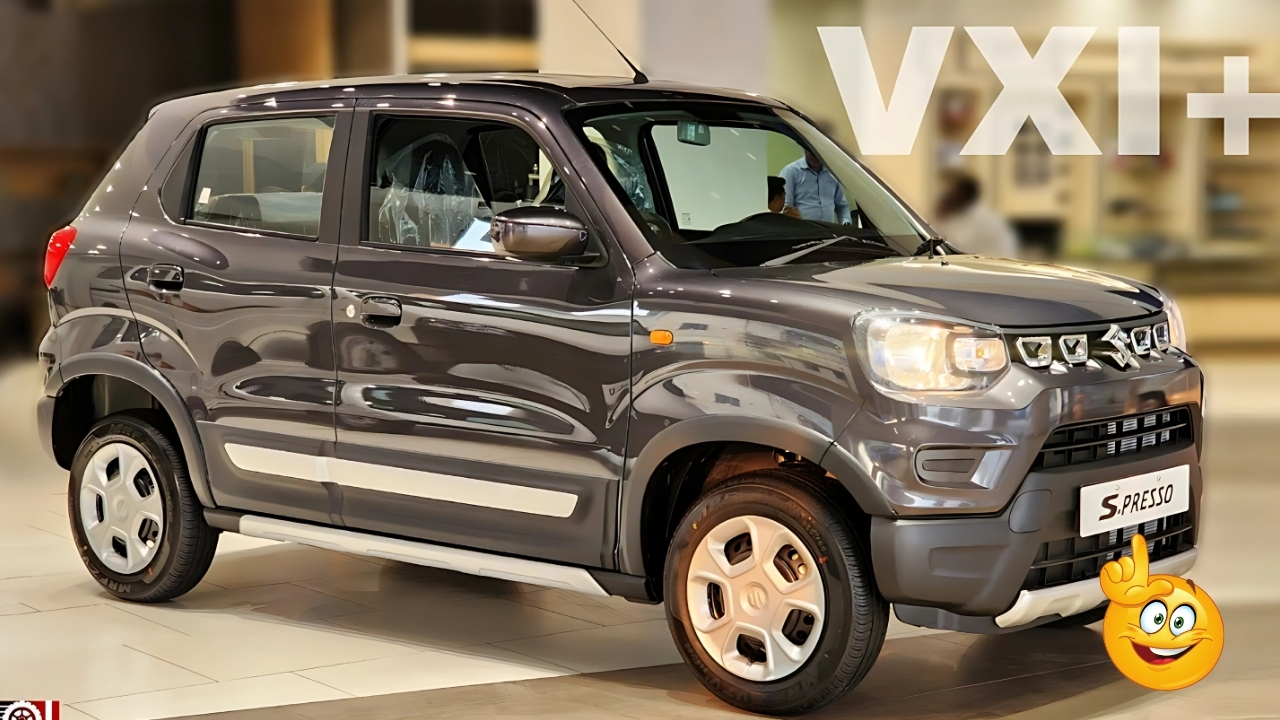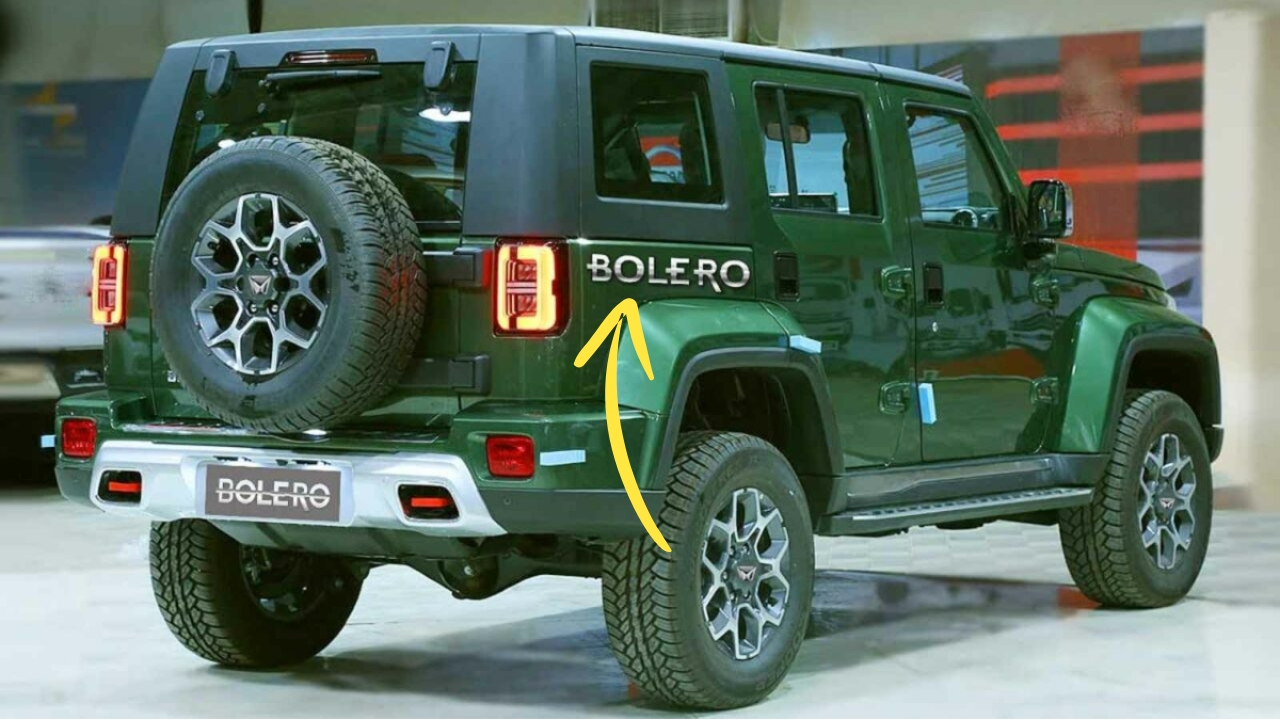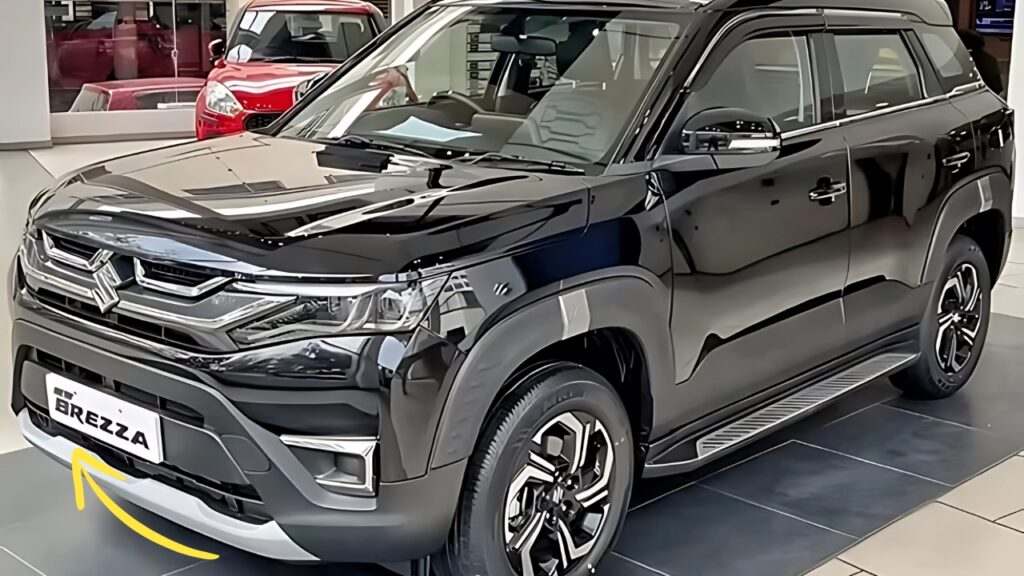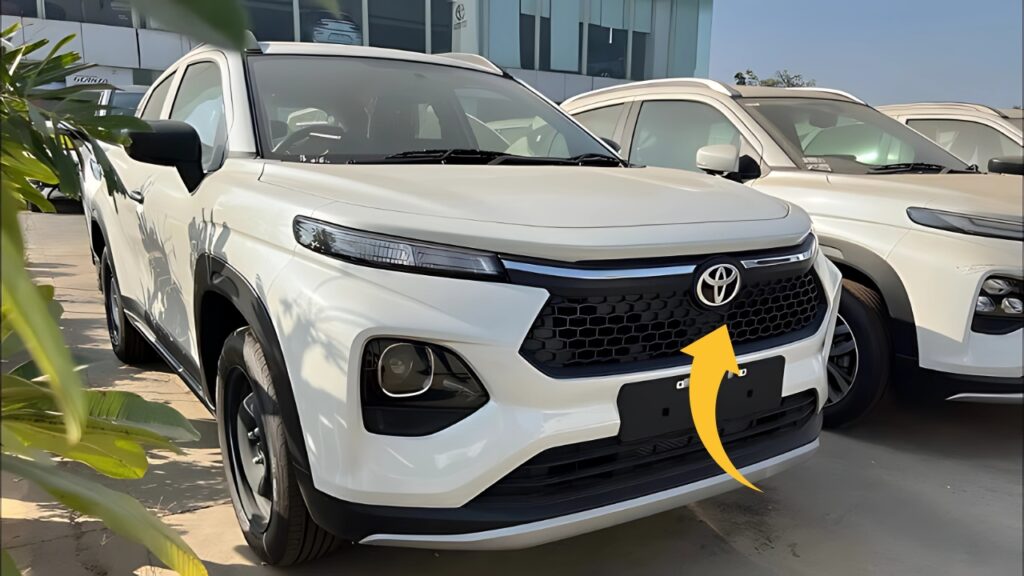Kia Carens Clavis: The automotive landscape continues to evolve with shifting consumer preferences and requirements, particularly in markets where family transportation needs intersect with urban driving challenges and value-conscious buyers.
Kia, having established itself as a design-forward brand with a keen understanding of emerging market dynamics, has introduced the Carens Clavis as its latest offering aimed squarely at this crucial intersection.
Building upon the success of the standard Carens while introducing distinctive elements that carve out a unique identity, the Clavis variant represents Kia’s response to evolving family mobility needs across developing markets.
This comprehensive examination explores how the Carens Clavis balances practicality, feature richness, and value positioning while maintaining the design-led approach that has defined Kia’s recent successes.
Through analysis of its design philosophy, spatial utilization, technological integration, and market positioning, we can understand how this vehicle aims to redefine expectations in the competitive compact MPV segment.
Kia Carens Clavis: Design Philosophy: Purposeful Distinctiveness
The Carens Clavis makes an immediate visual impact through its distinctive interpretation of Kia’s current design language.
While sharing fundamental architecture with the standard Carens, the Clavis variant introduces several meaningful differentiation points that create a unique character.
The front fascia features a reinterpreted “Tiger Nose” grille with a more angular execution, flanked by split LED headlamps that create a distinctive lighting signature.
This arrangement places the main headlight units lower on the front end, with slim LED daytime running lights positioned above, establishing a modern two-tier lighting approach that’s becoming increasingly characteristic of contemporary Kia designs.
The side profile reveals a silhouette that balances MPV practicality with crossover-inspired elements.
The extended wheelbase maximizes interior volume while subtle black cladding around wheel arches and along the lower doors creates visual interest and communicates a degree of ruggedness not typically associated with the MPV segment.
The floating roof effect, achieved through blacked-out D-pillars, reduces the visual mass despite the vehicle’s substantial interior volume.
At the rear, connected LED taillights span the width of the tailgate, creating a contemporary appearance while enhancing night-time visibility and brand recognition.
The tailgate design prioritizes a low loading lip for easy cargo access, with the rear bumper incorporating skid plate-style elements that echo the front design and reinforce the crossover aesthetic.
Available in seven exterior colors including the signature Clavis-exclusive Aurora Green Pearl, the vehicle offers sufficient personalization options without overwhelming buyers with excessive choices.
Wheel designs range from 16-inch alloys on entry variants to 17-inch machined-finish options on higher trims, striking a balance between visual appeal and comfort over varied road surfaces.
The interior design demonstrates Kia’s growing confidence in creating environments that feel premium despite mainstream pricing.
The dashboard employs a horizontal layout with minimalist physical controls, relying instead on the centrally mounted touchscreen for most functions.
Ambient lighting with multiple color options enhances the cabin atmosphere after dark, while thoughtfully placed piano black and satin chrome accents create visual interest without appearing ostentatious.
Material selection balances durability with perceived quality, utilizing soft-touch surfaces at primary contact points while employing more practical materials in areas likely to face heavy wear from family use.
The overall design aesthetic successfully communicates contemporary sophistication without alienating value-conscious buyers or suggesting fragility inappropriate for family transportation.
Spatial Utilization: Family-Focused Flexibility
Interior packaging represents the core competency demanded of any successful MPV, and the Carens Clavis demonstrates Kia’s expertise in this crucial area.
The vehicle employs a 2,780mm wheelbase, extracting impressive interior volume from relatively compact external dimensions (4,540mm length, 1,800mm width, 1,700mm height).
This architectural efficiency translates to genuine three-row seating capability without requiring an excessively large footprint that would compromise urban maneuverability.
The standard seven-seat configuration arranges passengers in a 2-3-2 layout, with the second row featuring a 60:40 split-folding bench including a smaller central position suitable for a child seat or occasional adult use.
Higher trims offer an optional 2-2-2 captain’s chair arrangement that reduces total capacity to six but enhances comfort for second-row passengers.
Both configurations feature one-touch folding mechanisms that allow easy access to the third row without requiring complex seat manipulations.
Second-row seats incorporate fore-aft sliding adjustment of up to 240mm, allowing owners to prioritize either third-row legroom or cargo capacity according to current needs.
This adaptability proves particularly valuable for families with changing requirements, from daily school runs to weekend excursions requiring additional luggage space.
The third row, often an afterthought in compact MPVs, receives careful attention in the Clavis design.
While not matching the spaciousness of larger vehicles, it provides genuinely usable accommodation for adults under 175cm for reasonable journeys, with dedicated air vents, USB-C ports, and cup holders acknowledging that these aren’t merely emergency seats but expected to serve regular use.
Cargo capacity varies according to seating configuration, offering 216 liters with all seats in place, expanding to 645 liters with the third row folded, and maximizing at 1,750 liters with both second and third rows stowed.
The completely flat load floor in maximum cargo configuration proves particularly practical for transporting larger items, while a dual-level boot floor in the seven-seat arrangement provides separated storage that prevents smaller items from sliding around during transit.
Throughout the cabin, storage solutions demonstrate careful consideration of family needs.
The center console incorporates a cooled box suitable for beverages, the door pockets accommodate 1-liter bottles, and clever touches like retractable tray tables with integrated cup holders for second-row passengers enhance everyday usability.
A total of six USB ports (including USB-C variants) and three 12V power outlets ensure device charging options for all occupants—a thoughtful acknowledgment of contemporary family travel realities.
Technical Specifications Table
| Feature | Specification |
|---|---|
| Dimensions (L×W×H) | 4,540mm × 1,800mm × 1,700mm |
| Wheelbase | 2,780mm |
| Ground Clearance | 195mm |
| Seating Capacity | 7 (2+3+2) or 6 (2+2+2) |
| Engine Options | 1.5L naturally aspirated petrol (115PS/144Nm) <br> 1.5L turbocharged petrol (160PS/253Nm) <br> 1.5L turbocharged diesel (115PS/250Nm) |
| Transmission Options | 6-speed manual <br> 7-speed dual-clutch automatic <br> 6-speed torque converter automatic (diesel only) |
| Drive Layout | Front-wheel drive |
| Fuel Efficiency (Claimed) | Petrol NA: 15.7 km/l <br> Petrol Turbo: 16.2 km/l <br> Diesel: 20.5 km/l |
| Suspension | McPherson strut (front) <br> Coupled torsion beam (rear) |
| Braking System | Disc brakes (front) <br> Drum brakes (rear on base variant) <br> Disc brakes (rear on higher variants) |
| Cargo Volume | 216L (all seats up) <br> 645L (third row folded) <br> 1,750L (second and third rows folded) |
| Fuel Tank Capacity | 45 liters |
| Turning Radius | 5.3 meters |
| Tires | 205/65 R16 or 215/55 R17 |
| Safety Features | 6 airbags, ESC, HAC, VSM, TPMS, all-wheel disc brakes (except base) |
| ADAS Features | Forward collision warning, autonomous emergency braking, lane keep assist, driver attention warning (higher trims) |
| Infotainment | 8-inch or 10.25-inch touchscreen, wireless Android Auto & Apple CarPlay |
| Warranty | 3 years/unlimited kilometers (extendable to 5 years) |
Powertrain Options: Calibrated for Efficiency and Adequacy
The Carens Clavis offers three engine choices calibrated to meet diverse customer requirements while maintaining reasonable efficiency:
A 1.5-liter naturally aspirated petrol engine producing 115PS and 144Nm of torque, paired with either a 6-speed manual or 7-speed dual-clutch automatic transmission.
A 1.5-liter turbocharged petrol delivering 160PS and 253Nm of torque, available with the same transmission options as the base engine.
A 1.5-liter turbocharged diesel generating 115PS and 250Nm of torque, offered with either a 6-speed manual or 6-speed torque converter automatic.
All powertrains drive the front wheels exclusively, with no all-wheel-drive option available—a deliberate choice reflecting the vehicle’s primary urban and highway use cases rather than off-road aspirations despite its crossover styling elements.
The base naturally aspirated petrol engine prioritizes initial affordability and straightforward maintenance, delivering adequate performance for urban environments when not fully loaded.
The turbocharged petrol offers a more satisfying driving experience, particularly when carrying multiple passengers or navigating hilly terrain, with enough reserve power for confident highway overtaking.
The diesel provides the strongest low-end torque for effortless driveability and superior fuel efficiency, making it particularly suited to high-mileage users or those frequently traveling with maximum occupancy.
Drive modes (Eco, Normal, and Sport) adjust throttle response, transmission shift patterns, and steering weight according to driver preference and conditions.
The system includes an additional “Traction” mode that optimizes power delivery on slippery surfaces, providing some enhanced capability in adverse weather without the complexity and cost of a full all-wheel-drive system.
Suspension tuning prioritizes ride comfort and stability over sporty handling characteristics—an appropriate choice given the vehicle’s family-oriented mission.
The McPherson strut front and coupled torsion beam rear arrangement represents a cost-effective solution that nonetheless delivers composed behavior over varied surfaces.
Special attention has been paid to suspension damping to control body movements despite the relatively tall body, resulting in reasonable stability during emergency maneuvers while maintaining compliance over rough roads.
Technology Integration: Connected Convenience
The Carens Clavis embraces contemporary connectivity expectations through Kia’s comprehensive infotainment and convenience features.
The centerpiece is the available 10.25-inch touchscreen system (8-inch on entry variants) featuring wireless Android Auto and Apple CarPlay integration, Bluetooth multi-device connectivity, and built-in navigation with real-time traffic information where infrastructure supports it.
The Kia Connect telematics platform enables remote functions through a smartphone application, including vehicle location, remote engine start (automatic transmission models), climate preconditioning, and status monitoring.
Over-the-air update capability ensures the system can receive enhancements and new features throughout the ownership period without requiring dealer visits.
The available 8-speaker Bose premium audio system represents a meaningful upgrade over the standard six-speaker arrangement, delivering improved clarity and bass response that enhances the entertainment experience for all occupants.
Thoughtful audio tuning includes a “Conversation Mode” that adjusts speaker balance to facilitate communication between front and rear passengers without requiring raised voices.
A digital instrument cluster (fully digital on higher trims, semi-digital on mid-range variants) presents vehicle information clearly while supporting multiple display configurations according to driver preference.
The available head-up display projects crucial information directly into the driver’s line of sight, reducing the need to look away from the road.
Convenience features extend to a 360-degree camera system that proves particularly valuable when maneuvering in tight spaces, ventilated front seats for comfort in hot climates, and a power-operated tailgate with height adjustment and hands-free operation.
The climate control system includes three-zone functionality, allowing separate temperature settings for driver, front passenger, and rear compartment—acknowledging that temperature preferences often vary among family members.
Safety Architecture: Protective Mindfulness
Family vehicles demand comprehensive safety provisions, and the Carens Clavis delivers a reassuring package combining passive protection with active accident avoidance technologies.
The foundation begins with a high-strength steel structure incorporating strategic crumple zones and reinforced passenger compartment, designed to manage collision energy effectively.
Standard safety equipment includes six airbags (dual front, front side, and curtain), electronic stability control, hill-start assist, and tire pressure monitoring.
Higher trims add driver attention warning, lead vehicle departure alert, and high beam assist.
The most comprehensive safety package introduces advanced driver assistance systems including forward collision warning with autonomous emergency braking, lane keeping assist, and blind spot detection.
Child safety receives particular attention through multiple ISOFIX attachment points, child-proof rear door locks, and rear occupant alert that reminds the driver to check the back seats before leaving the vehicle.
These features reflect an understanding that family vehicles must provide comprehensive protection for vulnerable younger passengers.
Braking performance comes from disc brakes at all four wheels on all but the base variant, which utilizes drums at the rear.
The electronic brake force distribution system adjusts pressure according to load conditions—particularly valuable in an MPV where passenger count can vary significantly.
Emergency stop signaling activates hazard lights during sudden braking to alert following traffic, potentially preventing chain-reaction collisions.
Market Positioning and Value Proposition
The Carens Clavis occupies a carefully calibrated position in the market, offering greater space and flexibility than compact SUVs while providing more manageable dimensions and efficiency than larger MPVs or three-row SUVs.
This middle ground proves increasingly attractive to expanding families seeking practical transportation without excessive size or cost.
Pricing strategy positions the vehicle as a premium offering within its segment without reaching into luxury territory, acknowledging that target customers seek quality and features but remain value-conscious.
The base variant focuses on essential functionality at an accessible price point, while higher trims introduce progressively more comfort, convenience, and technology features for buyers with greater discretionary spending capacity.
The ownership proposition extends beyond the initial purchase through Kia’s comprehensive warranty coverage (3 years/unlimited kilometers, extendable to 5 years), transparent maintenance packages, and growing service network.
These elements address practical ownership concerns that often influence family vehicle purchasing decisions as much as the product specifications themselves.
Competition comes primarily from other compact MPVs and three-row SUVs in similar price brackets, with the Carens Clavis distinguishing itself through its blend of space efficiency, feature content, and design appeal.
The crossover-inspired styling elements attract buyers who appreciate MPV practicality but desire more visual interest than traditional “box” designs typically provide.
Kia Carens Clavis: Practical Sophistication for Contemporary Families
The Kia Carens Clavis represents a thoughtful response to evolving family transportation needs, particularly in markets where urban density, value sensitivity, and feature expectations create specific demands not perfectly addressed by either traditional MPVs or trend-following SUVs.
By combining genuine three-row functionality within relatively compact dimensions, contemporary technology integration, and design elements that transcend purely utilitarian approaches, the vehicle delivers a compelling package for its target demographic.
Its success ultimately hinges on how effectively it balances the sometimes competing priorities of space, efficiency, features, and value—the eternal challenge facing family vehicle designers.
The Carens Clavis appears to strike this balance effectively, offering sufficient distinctiveness to stand out in a crowded marketplace while delivering the fundamental practicality that remains non-negotiable for family buyers.
In a market increasingly dominated by style-focused crossovers that sometimes compromise functionality for fashion, the Carens Clavis makes a persuasive case for the modern MPV—not as a reluctant compromise choice but as a sophisticated solution for those who prioritize family accommodation without surrendering entirely to purely practical considerations.
This balance of rationality and emotional appeal may well define the next evolution of family transportation as manufacturers continue adapting to changing consumer expectations across global markets.
